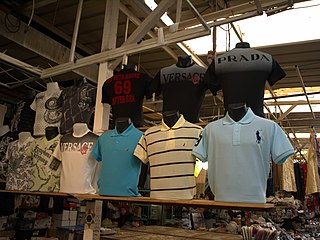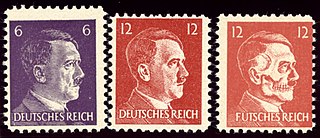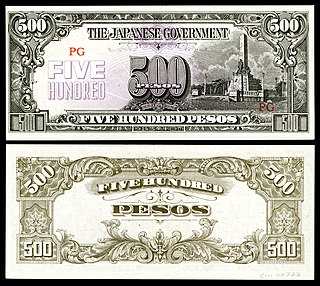A false document is a technique by which an author aims to increase verisimilitude in a work of fiction by inventing and inserting or mentioning documents that appear to be factual. The goal of a false document is to convince an audience that what is being presented is factual.
The Zinoviev letter was a fake document published and sensationalised by the British Daily Mail newspaper four days before the 1924 United Kingdom general election, which was held on 29 October. The letter purported to be a directive from Grigory Zinoviev, the head of the Communist International (Comintern) in Moscow, to the Communist Party of Great Britain (CPGB), ordering it to engage in seditious activities. It stated that the normalisation of British–Soviet relations under a Labour Party government would radicalise the British working class and put the CPGB in a favourable position to pursue a Bolshevik-style revolution. It further suggested that these effects would extend throughout the British Empire. The right-wing press depicted the letter as a grave foreign subversion of British politics and blamed the incumbent Labour government under Ramsay MacDonald for promoting the policy of political reconciliation and open trade with the Soviet Union on which the scheme appeared to depend. The election resulted in the fall of the first Labour government and a strong victory for the Conservative Party and the continued collapse of the Liberal Party. Labour supporters often blamed the letter, at least in part, for their party's defeat.

Forgery is a white-collar crime that generally refers to the false making or material alteration of a legal instrument with the specific intent to defraud. Tampering with a certain legal instrument may be forbidden by law in some jurisdictions but such an offense is not related to forgery unless the tampered legal instrument was actually used in the course of the crime to defraud another person or entity. Copies, studio replicas, and reproductions are not considered forgeries, though they may later become forgeries through knowing and willful misrepresentations.
Black propaganda is a form of propaganda intended to create the impression that it was created by those it is supposed to discredit. Black propaganda contrasts with gray propaganda, which does not identify its source, as well as white propaganda, which does not disguise its origins at all. It is typically used to vilify or embarrass the enemy through misrepresentation.

Operation Northwoods was a proposed false flag operation that originated within the US Department of Defense of the United States government in 1962. The proposals called for CIA operatives to both stage and commit acts of terrorism against American military and civilian targets, blame them on the Cuban government, and would be used to justify a war against Cuba. The possibilities detailed in the document included the remote control of civilian aircraft which would be secretly repainted as US Air Force planes, a fabricated 'shoot down' of a US Air Force fighter aircraft off the coast of Cuba, the possible assassination of Cuban immigrants, sinking boats of Cuban refugees on the high seas, blowing up a U.S. ship, and orchestrating terrorism in U.S. cities. The proposals were rejected by President John F. Kennedy.

To counterfeit means to imitate something authentic, with the intent to steal, destroy, or replace the original, for use in illegal transactions, or otherwise to deceive individuals into believing that the fake is of equal or greater value than the real thing. Counterfeit products are fakes or unauthorized replicas of the real product. Counterfeit products are often produced with the intent to take advantage of the superior value of the imitated product. The word counterfeit frequently describes both the forgeries of currency and documents as well as the imitations of items such as clothing, handbags, shoes, pharmaceuticals, automobile parts, unapproved aircraft parts, watches, electronics and electronic parts, software, works of art, toys, and movies.

Operation Bernhard was an exercise by Nazi Germany to forge British bank notes. The initial plan was to drop the notes over Britain to bring about a collapse of the British economy during the Second World War. The first phase was run from early 1940 by the Sicherheitsdienst (SD) under the title Unternehmen Andreas. The unit successfully duplicated the rag paper used by the British, produced near-identical engraving blocks and deduced the algorithm used to create the alpha-numeric serial code on each note. The unit closed in early 1942 after its head, Alfred Naujocks, fell out of favour with his superior officer, Reinhard Heydrich.
The Tanaka Memorial is an alleged Japanese strategic planning document from 1927 in which Prime Minister Baron Tanaka Giichi laid out a strategy to take over the world for Emperor Hirohito. The authenticity of the document was long accepted and it is still quoted in some Chinese textbooks, but historian John Dower states that "most scholars now agree that it was a masterful anti-Japanese hoax."

A superdollar is a very high quality counterfeit United States one hundred-dollar bill, alleged by the U.S. government to have been made by unknown organizations or governments. In 2011, government sources stated that these counterfeit bills were in "worldwide circulation" from the late 1980s until at least July 2000 in an extradition court case.

Operation Cornflakes was a morale operation by the Office of Strategic Services during World War II that aimed to trick Deutsche Reichspost into inadvertently delivering anti-Nazi propaganda to German citizens through mail.

Counterfeit money is currency produced outside of the legal sanction of a state or government, usually in a deliberate attempt to imitate that currency and so as to deceive its recipient. Producing or using counterfeit money is a form of fraud or forgery, and is illegal in all jurisdictions of the world. The business of counterfeiting money is nearly as old as money itself: plated copies have been found of Lydian coins, which are thought to be among the first Western coins. Before the introduction of paper money, the most prevalent method of counterfeiting involved mixing base metals with pure gold or silver. Another form of counterfeiting is the production of documents by legitimate printers in response to fraudulent instructions. During World War II, the Nazis forged British pounds and American dollars. Today, some of the finest counterfeit banknotes are called Superdollars because of their high quality and imitation of the real US dollar. There has been significant counterfeiting of Euro banknotes and coins since the launch of the currency in 2002, but considerably less than that of the US dollar.

Counterfeiting of the currency of the United States is widely attempted. According to the United States Department of Treasury, an estimated $70 million in counterfeit bills are in circulation, or approximately 1 note in counterfeits for every 10,000 in genuine currency, with an upper bound of $200 million counterfeit, or 1 counterfeit per 4,000 genuine notes. However, these numbers are based on annual seizure rates on counterfeiting, and the actual stock of counterfeit money is uncertain because some counterfeit notes successfully circulate for a few transactions.

Samuel Curtis Upham was an American journalist, lyricist, merchant, bookkeeper, clerk, navy officer, prospector, and counterfeiter, during the later part of the 19th century, sometimes, known as "Honest Sam Upham".

In general, philatelic fakes and forgeries are labels that look like postage stamps but have been produced to deceive or defraud. Learning to identify these can be a challenging branch of philately.

During World War II in the Philippines, the occupying Japanese government issued a fiat currency in several denominations; this is known as the Japanese government-issued Philippine peso. The Japanese government outlawed possession of guerrilla currency, and declared a monopoly on the issuance of money, so that anyone found to possess guerrilla notes could be arrested or even executed.

Japanese invasion money, officially known as Southern Development Bank Notes, was currency issued by the Japanese Military Authority, as a replacement for local currency after the conquest of colonies and other states in World War II.
The Habbush letter, or Habbush memo, is a handwritten message dated July 1, 2001, which appears to show a link between al-Qaeda and Iraq's government. It purports to be a direct communication between the head of Iraqi Intelligence, General Tahir Jalil Habbush al-Tikriti, to Iraqi president Saddam Hussein, outlining mission training which Mohamed Atta, one of the organizers of the September 11 attacks, supposedly received in Iraq. The letter also claims that Hussein accepted a shipment from Niger, an apparent reference to an alleged uranium acquisition attempt that U.S. President George W. Bush cited in his January 2003 State of the Union address.

The Forgery and Counterfeiting Act 1981 is an Act of the Parliament of the United Kingdom which makes it illegal to make fake versions of many things, including legal documents, contracts, audio and visual recordings, and money of the United Kingdom and certain protected coins. It replaces the Forgery Act 1913, the Coinage Offences Act 1936 and parts of the Forgery Act 1861. It implements recommendations made by the Law Commission in their report on forgery and counterfeit currency.
The following outline is provided as an overview and topical guide to forgery:
The Interagency Active Measures Working Group was a group led by the United States Department of State and later by the United States Information Agency (USIA). The group was formed early during the Reagan administration, in 1981, purportedly as an effort to counter Soviet disinformation.












